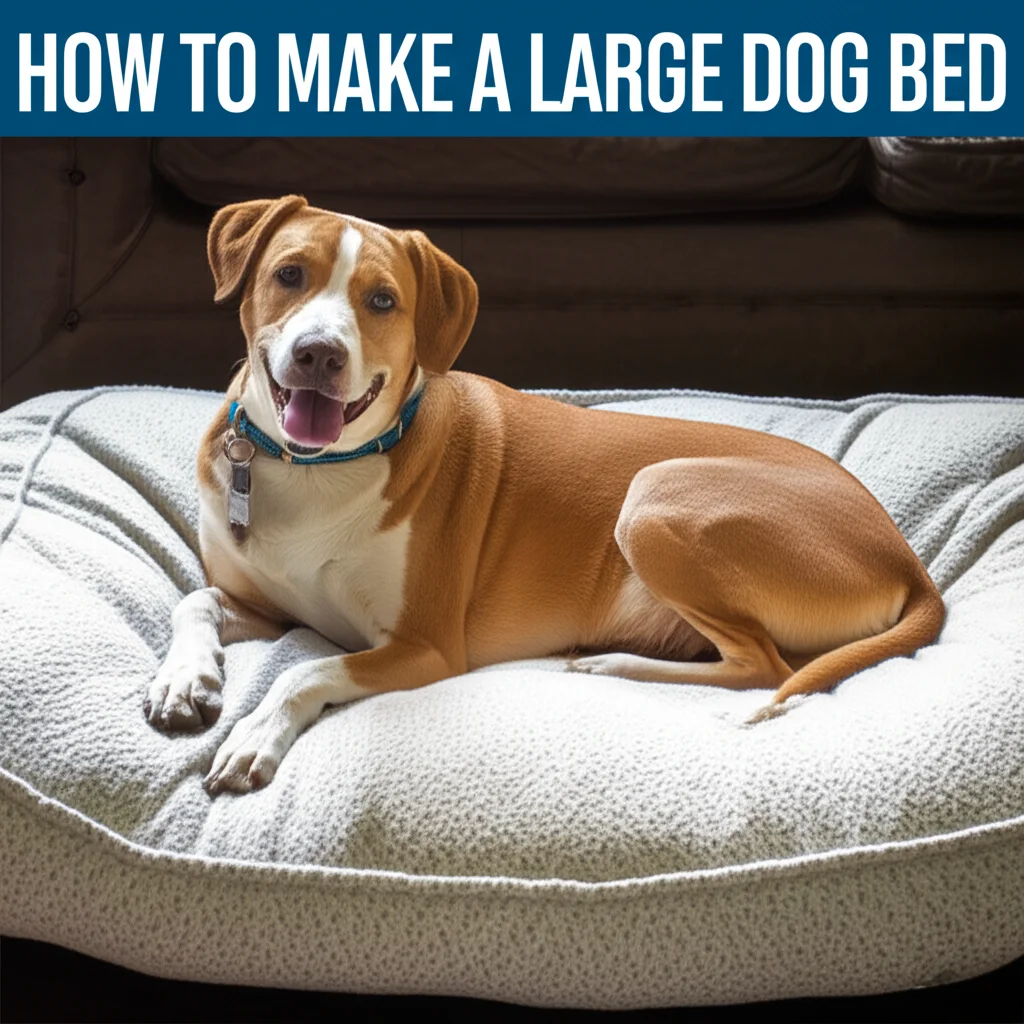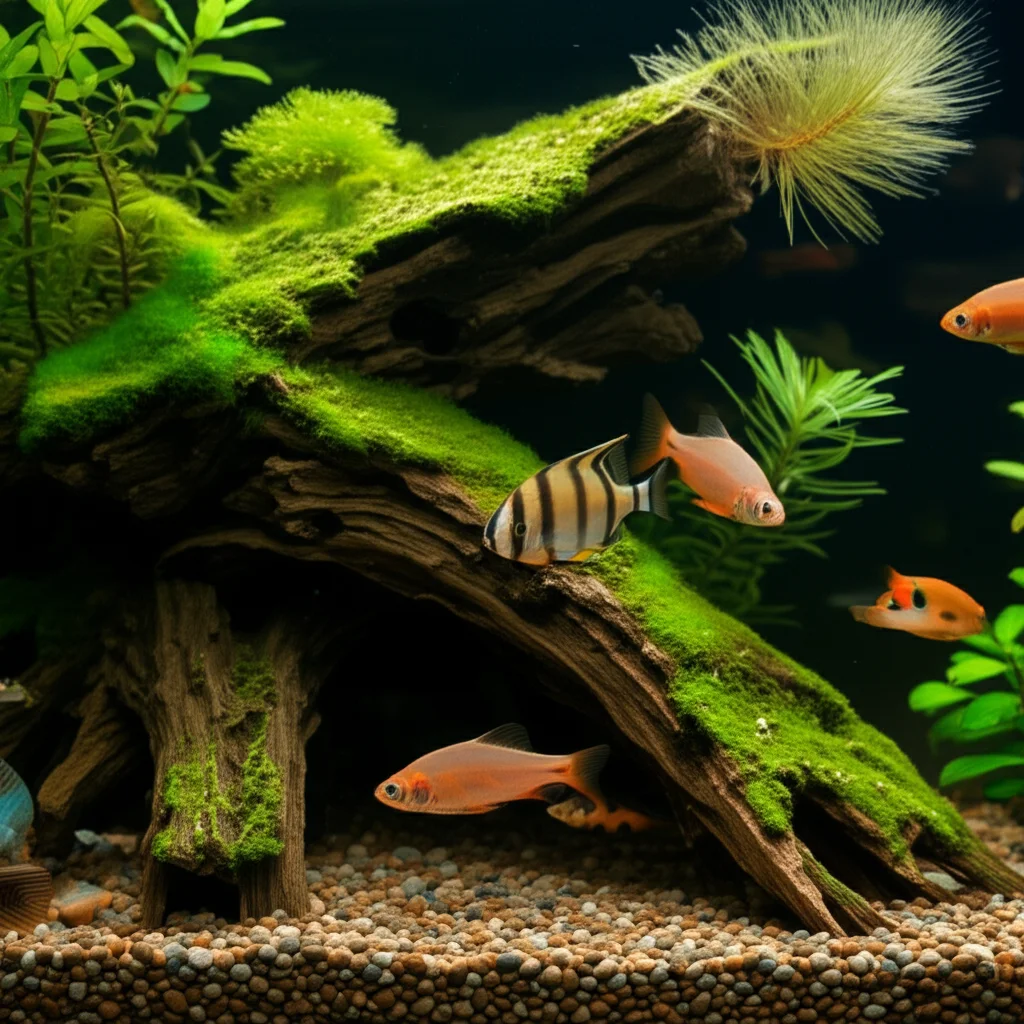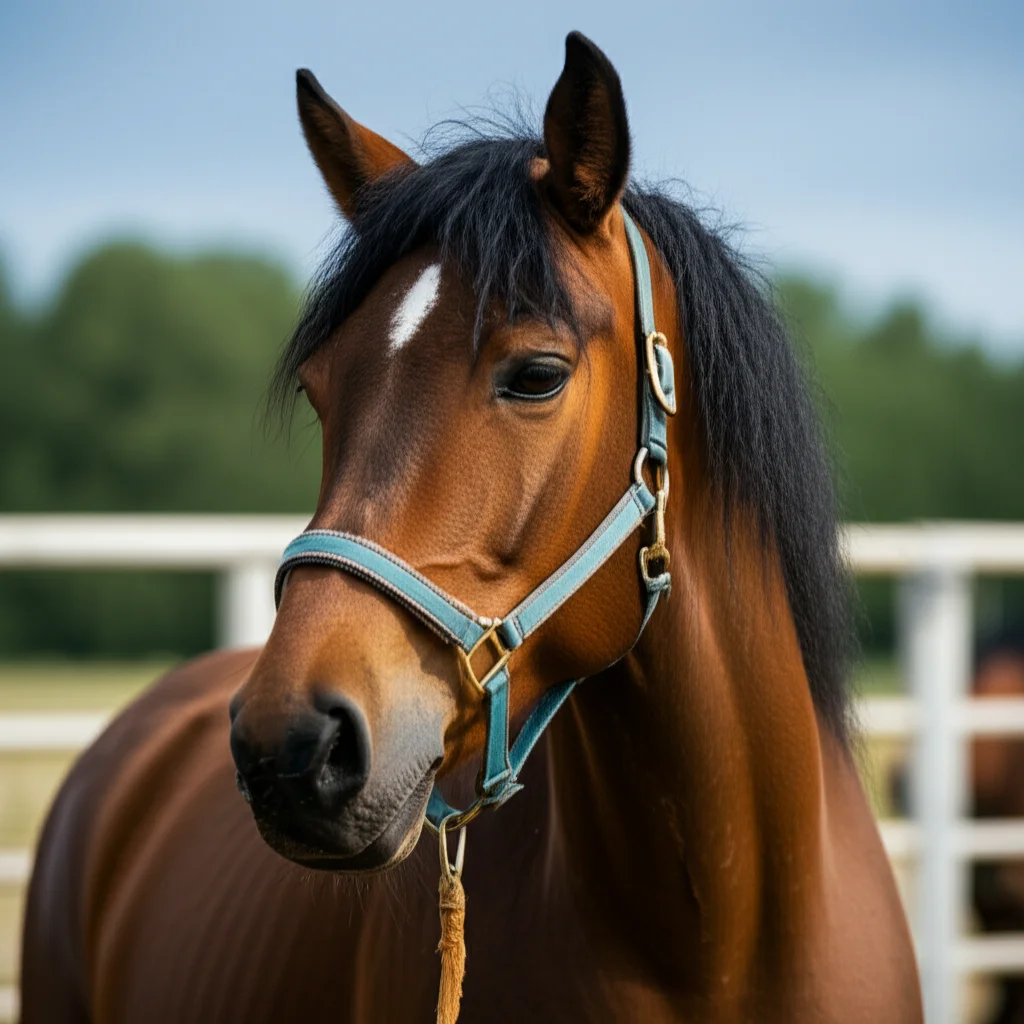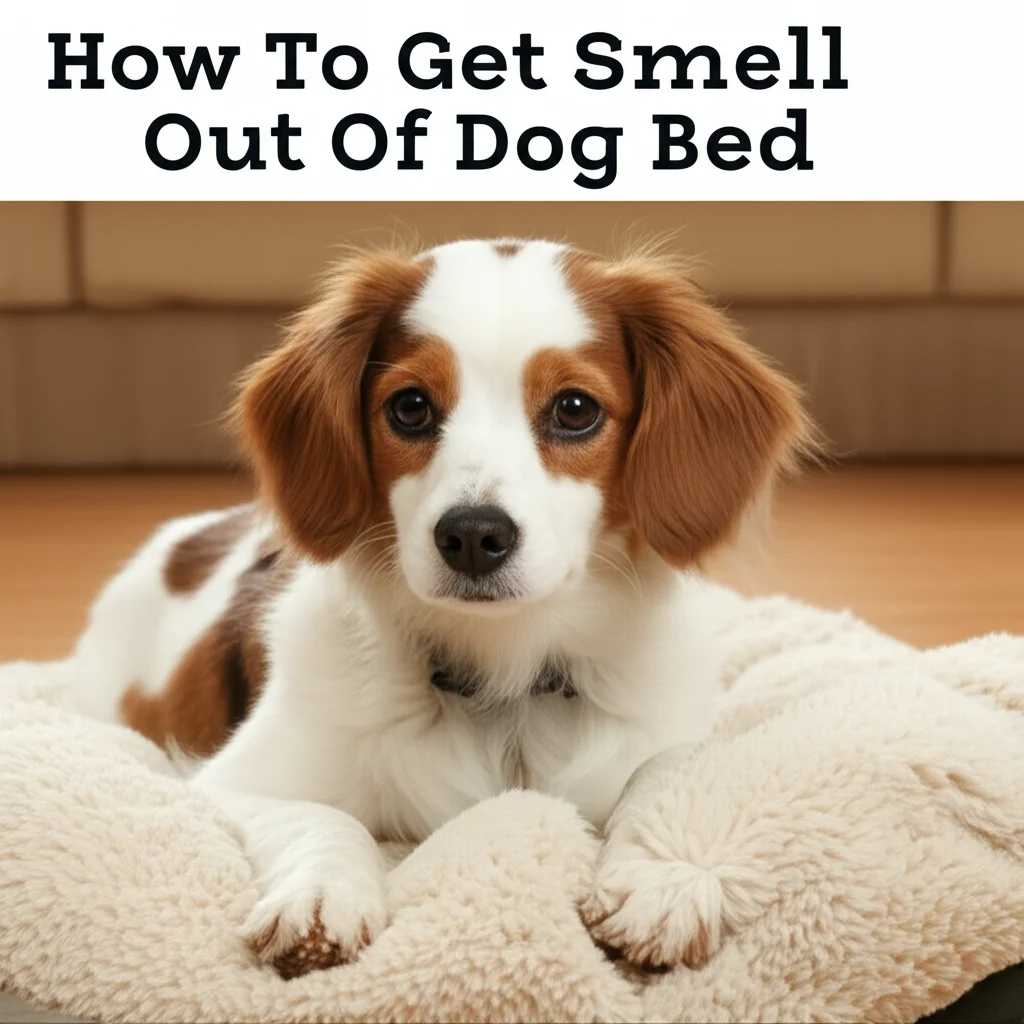· Todd Martin · Pet Care · 17 min read
How To Make A Large Dog Bed

How To Make A Large Dog Bed: A DIY Guide to Canine Comfort
My loyal companion deserves the best, and sometimes, store-bought dog beds just do not cut it. They might be too small, not durable enough, or simply lack the specific features I want. This is especially true when you own a larger breed. Creating a custom large dog bed at home offers a fantastic solution.
Building a dog bed yourself allows for perfect sizing and material choices. You can ensure it stands up to heavy use and is easy to clean. This guide explores the reasons why DIY is a great option. It covers planning, gathering materials, and detailed steps to construct a comfortable and lasting bed for your beloved pet. Get ready to give your big dog the luxury sleep spot they deserve.
Takeaway
- Custom Fit: Create a dog bed perfectly sized for your large breed.
- Cost Savings: Save money compared to buying oversized commercial beds.
- Durability: Choose strong materials that withstand heavy use.
- Easy Maintenance: Design the bed with washable covers for simple cleaning.
- Personal Touch: Infuse love and care into your pet’s special sleeping area.
To make a large dog bed, gather durable fabric, suitable stuffing material, and basic sewing supplies. Design a pattern based on your dog’s size, cut and sew the fabric into a removable cover, then fill it with chosen stuffing to create a comfortable, custom sleeping space that is easy to clean.
Why Make Your Own Large Dog Bed? Benefits & Savings
Deciding to make a large dog bed yourself offers many advantages. One of the biggest reasons is cost savings. Large dog beds from stores can be very expensive, especially if you want high-quality materials. By buying materials in bulk and doing the work yourself, you can save a significant amount of money.
Another key benefit is customization. Store-bought beds often come in standard sizes. These sizes might not fit your specific dog well. A custom bed means you can tailor the dimensions exactly to your dog’s length, width, and preferred sleeping position. You control the firmness and type of filling, ensuring maximum comfort for your pet. My big dog loves to sprawl out, and a custom bed gives him all the space he needs.
Furthermore, a DIY dog bed offers superior durability. You select the fabrics and stuffing, choosing materials known for their strength and longevity. Many commercial beds use flimsy materials that break down quickly under a large dog’s weight. When you build it, you know it is built to last. This means fewer replacements over time.
Finally, there is the satisfaction of creating something special for your pet. You can pick colors and patterns that match your home decor. You also ensure the bed is easy to clean. This is important for maintaining hygiene and freshness, which we will discuss more in detail. A well-made, clean bed improves your dog’s health and happiness.
Planning Your Large Dog Bed Project: Size, Style & Materials
Proper planning is crucial before you start building your large dog bed. First, measure your dog accurately. Have your dog lie down in their favorite sleeping position, whether curled up or stretched out. Measure from nose to tail and then add 10-12 inches to that length. For the width, measure from paw to paw, adding a similar margin. This ensures ample space for your dog to comfortably shift and stretch.
Consider the style of bed that best suits your dog and your home. Do you want a simple flat mat? A bolster bed with raised edges for head support? Or perhaps a deep, cuddler-style bed? Flat beds are often easiest for DIY beginners. Bolster beds provide extra support and comfort. Think about where the bed will sit in your home. This helps you determine the final shape and aesthetic.
Choosing the right materials is vital for comfort and durability. For the outer cover, select a sturdy, washable fabric. Canvas, denim, or upholstery fabric are excellent choices. Look for materials labeled “heavy-duty” or “pet-friendly.” These fabrics resist wear and tear better. For the inner cushion, you have several options. High-density foam is supportive and retains its shape. Memory foam offers orthopedic benefits, great for older dogs. You can also use shredded foam, old blankets, or even cedar shavings for natural odor control. I usually opt for a combination of foam and soft batting for a plush feel.
Remember to factor in cleaning ease when planning. A removable, washable cover is a must for large dog beds. This allows you to easily how to clean a dog bed regularly. A zippered closure makes cover removal simple. Planning these details now saves you time and effort later on.
Gathering Your Supplies: What You Need for a DIY Dog Bed
Once you have your measurements and design in mind, it is time to gather the necessary supplies. Having everything ready before you start saves time and frustration. This step ensures a smooth building process. I always make a checklist to avoid forgetting anything important.
Here is a comprehensive list of materials and tools you will need:
- Outer Fabric: Choose a durable, washable fabric like canvas, denim, outdoor upholstery fabric, or a heavy-duty twill. You will need enough to cut two large rectangular (or desired shape) pieces for the top and bottom, plus strips for the side gussets if making a bolster or box-style bed.
- Inner Fabric (Optional): A lightweight fabric like muslin or cotton can be used for an inner casing for the stuffing. This makes the outer cover easier to remove and wash.
- Stuffing Material:
- Foam: High-density upholstery foam or memory foam is excellent for support. You may need a large block or several smaller pieces.
- Shredded Foam or Batting: Can be used alone for a softer bed or layered over solid foam for extra plushness.
- Old Blankets/Towels/Clothing: A budget-friendly option for filler, especially if you have a lot of large items to repurpose. Ensure they are clean.
- Cedar Shavings: Can be mixed with other fillers to deter fleas and provide a fresh scent.
- Heavy-Duty Zipper: A long, durable zipper (e.g., 36-60 inches depending on bed size) for the removable cover. This makes it simple to how to get smell out of dog bed by washing the cover.
- Strong Thread: Polyester or heavy-duty cotton thread is essential for sewing durable seams that will withstand your dog’s activity.
- Basic Sewing Machine: A machine capable of handling heavy fabrics.
- Sharp Fabric Scissors: For precise cutting of thick materials.
- Measuring Tape: For accurate measurements of fabric and foam.
- Fabric Chalk or Marker: For marking cutting lines on your fabric.
- Pins or Fabric Clips: To hold fabric pieces together before sewing.
- Optional for Bolsters: Dacron batting or polyester fiberfill for the bolster sections.
Before you begin, wash and dry your fabric. This helps to pre-shrink it and prevent future shrinking after the bed is made. It ensures your cover will fit correctly after washing. Gather all these items in your workspace. This prepares you for a smooth and efficient building process.
Step-by-Step Guide: Building Your Large Dog Bed
Now, let’s get into the construction of your large dog bed. I find it easiest to break this down into manageable steps. This ensures accuracy and makes the project feel less daunting. We will focus on a simple box-style bed with a removable cover.
H3: Cutting Your Fabric Pieces
First, lay your main fabric flat and smooth it out. Using your dog’s measurements, mark out two large rectangles for the top and bottom panels of the bed. These should be your chosen length and width, plus a 1/2-inch seam allowance on all sides. For example, if your bed is 40x30 inches, cut two pieces that are 41x31 inches. Next, cut strips for the side gussets. You will need two long strips for the length and two shorter strips for the width. The height of these strips depends on how thick you want your bed to be (e.g., 6 inches), plus a 1/2-inch seam allowance on the top and bottom. So, a 6-inch high bed would need strips cut 7 inches wide. Their length will match the length/width of your top/bottom panels.
H3: Assembling the Outer Cover
Begin by attaching the zipper. Take one of your long side gusset strips. On one long edge, measure in about an inch from each end and mark it. Place your zipper face down along this edge between the marks. Pin it in place. Stitch one side of the zipper to this fabric strip. Then, take another long side gusset strip of the same dimensions. Pin the other side of the zipper to this strip. Stitch it firmly. You now have two long side strips connected by a zipper. This will form one of the long sides of your bed, allowing for easy removal of the inner cushion.
Next, sew the side gusset pieces together. Take the zippered piece and attach it to one of the shorter side gusset pieces, right sides together, forming a corner. Repeat for all four corners, creating a continuous loop of side fabric. Press your seams open for a clean finish. Now, take one of your large top panels. Pin it to the top edge of your assembled side gusset loop, right sides together. Stitch all around, carefully navigating the corners. Repeat this process for the bottom panel, attaching it to the remaining raw edge of the side gusset loop. Leave the zipper open for now. You now have a complete, zippered outer cover for your large dog bed.
H3: Creating the Inner Cushion
For the inner cushion, you can use a solid foam block or create an inner fabric casing. If using a foam block, simply cut the foam to your exact bed dimensions (e.g., 40x30 inches for a 40x30 bed). If you are using shredded foam, old blankets, or a mix, create an inner casing. Cut two pieces of lightweight fabric (like muslin) to the same dimensions as your outer cover’s top and bottom panels. Cut side gussets for this inner casing as well, just like you did for the outer cover. Sew these pieces together to form an inner bag, leaving one side open. Fill this bag with your chosen stuffing material. Do not overfill it; you want it firm but still pliable. Once filled, hand-stitch the opening closed. This inner casing protects the outer cover from the stuffing and makes it much easier to clean the cover regularly. It also helps prevent pet hair from clinging directly to the inner material, making it easier to how to get dog hair off bed sheets when the cover is washed.
H3: Final Assembly
Carefully insert your foam block or filled inner cushion into the outer zippered cover. Adjust the cushion so it sits flat and fills out the corners. Zip the cover closed. Stand back and admire your work. You have successfully created a custom, large dog bed! My dogs always inspect their new beds with great curiosity and usually fall asleep on them immediately.
Choosing and Attaching the Fabric Cover: Washable Design
The fabric cover is a crucial part of your large dog bed. It needs to be durable, comfortable, and, most importantly, washable. Choosing the right fabric ensures your bed stays fresh. Attaching it correctly guarantees longevity. I always prioritize materials that can withstand frequent washing cycles.
When selecting fabric, look for tightly woven, heavy-duty options. Canvas, denim, and outdoor upholstery fabrics are excellent choices. They resist tearing and snagging from claws. Consider fabrics with a short pile or smooth surface, as these tend to attract less pet hair. Some fabrics even have water-resistant properties, which can be a bonus for unexpected spills or accidents. The fabric should also be comfortable for your dog to lie on.
For a washable design, a zippered cover is essential. This allows you to easily remove the cover for cleaning without having to wash the entire bed. I recommend using a long, heavy-duty zipper along one of the long sides of the bed. This provides a wide opening to insert and remove the inner cushion. When sewing the zipper, use strong thread and reinforce the stitches at the ends. This prevents the zipper from pulling away from the fabric over time.
Attaching the cover involves sewing the fabric pieces together precisely. The top and bottom panels are typically cut to the exact dimensions of your desired bed size, plus a seam allowance. The side panels (gussets) determine the bed’s thickness. They connect the top and bottom pieces. Remember to cut these side panels wide enough to accommodate your foam or filling. My preference is to use a 1/2-inch seam allowance throughout. This gives enough room for secure stitching without adding too much bulk.
After cutting your pieces, sew the zipper into one of the long side panels. Then, sew the remaining side panels to form a continuous loop. Finally, sew the top and bottom panels to this loop, right sides together. Always stitch slowly and carefully, especially around corners. This creates strong, neat seams. A well-constructed cover will stand up to years of use and many washes. It will keep your large dog bed looking and smelling clean. This is important for your home’s freshness and your dog’s health.
Adding Finishing Touches & Maintaining Your DIY Dog Bed
Once your large dog bed is assembled, a few finishing touches can enhance its appeal and functionality. These small details make a big difference in both aesthetics and long-term care. I find these steps truly complete the project.
First, consider adding non-slip backing if your dog bed tends to slide on hard floors. You can sew a piece of non-slip rug pad fabric to the bottom of the outer cover. Alternatively, apply dots or lines of silicone caulk to the bottom fabric. Let the caulk dry completely before your dog uses the bed. This prevents the bed from shifting, especially when your large dog jumps on or off.
Next, think about personalizing the bed. You could embroider your dog’s name on the cover. Or, you could add a patch or a decorative trim. While keeping the design simple and functional is good, a small personal touch makes the bed uniquely yours and your pet’s. This also adds a touch of charm to your home decor.
Maintaining your DIY large dog bed is key to its longevity and hygiene. Because you designed it with a removable cover, cleaning is straightforward. Regularly unzip the cover and machine wash it according to the fabric care instructions. For most durable fabrics like canvas or denim, a warm water wash and tumble dry on low or medium heat works well. If your dog has accidents, promptly remove the cover and wash it immediately to prevent stains and odors. For minor spots, you can spot-clean the cover with a pet-safe cleaner.
Periodically, you may also want to refresh the inner cushion. If you used foam, simply air it out outdoors on a sunny day. This helps eliminate any trapped odors. If you used loose filling like shredded fabric, you might need to fluff it or add more over time as it compacts. You can also spray the inner cushion with a fabric refresher. My dog’s bed gets a lot of use, so I aim to wash the cover every 2-4 weeks. This keeps it fresh and clean. Regular cleaning also helps prevent fleas and other pests.
Addressing Specific Comfort & Support Needs for Large Breeds
Large dog breeds have unique comfort and support needs. Their size and weight put more stress on their joints. Providing adequate support is critical for their long-term health and well-being. A homemade bed allows you to tailor this support precisely.
One major consideration is the type of filling. For large dogs, memory foam or high-density orthopedic foam is often the best choice. These materials conform to your dog’s body, distributing weight evenly. This reduces pressure points on joints like hips, elbows, and shoulders. This is especially important for older dogs or breeds prone to hip dysplasia. I prefer using a base layer of firm orthopedic foam. Then I add a softer layer of convoluted foam or thick batting on top. This provides both firm support and plush comfort.
The thickness of the bed is also important. A large dog bed should be substantial enough to prevent your dog from sinking straight to the floor. Aim for a bed thickness of at least 4-6 inches for most large breeds. For giant breeds, 6-8 inches or more might be necessary. This ensures proper elevation and cushioning. My Labrador needs a minimum of 5 inches to feel truly supported.
Consider bolster support. Many large dogs enjoy resting their heads on a raised edge. You can create bolsters by sewing separate channels around the perimeter of the bed. Fill these channels with polyester fiberfill or shredded foam. These bolsters give your dog a sense of security. They also provide a comfortable headrest. This design mimics the natural den-like feeling many dogs enjoy.
Finally, think about the bed’s stability. A large, heavy dog jumping onto a bed can cause it to shift or slide. As mentioned earlier, a non-slip bottom is a simple solution. This makes the bed safer and more inviting for your dog. It prevents the bed from becoming a slipping hazard. Ensuring these elements are part of your design provides your large dog with the ultimate comfort and support they need to rest peacefully.
FAQs About Making a Large Dog Bed
What are the best materials for a large dog bed that will last?
The best materials for a durable large dog bed include heavy-duty upholstery fabric, canvas, or denim for the cover. These fabrics resist wear and tear. For the filling, high-density foam or memory foam provides excellent support and retains its shape over time. Strong, UV-resistant thread ensures seams hold up.
How do I size a dog bed for a giant breed?
To size a dog bed for a giant breed, measure your dog while they are fully stretched out, from nose to tail, and from paw to paw. Add at least 12-18 inches to these measurements for extra comfort and room to move. A 60x40 inch bed or larger may be appropriate for giant breeds like Great Danes or Mastiffs.
Can I make a washable cover for my DIY dog bed?
Yes, making a washable cover is highly recommended. Sew a heavy-duty zipper along one of the long sides of the bed cover. This allows you to easily remove the cover. Choose pre-shrunk, machine-washable fabrics like canvas. This makes cleaning simple and keeps the bed hygienic.
What kind of stuffing is best for an older large dog?
For an older large dog, orthopedic options are best. Memory foam or high-density foam offers superior joint support. These materials contour to your dog’s body, reducing pressure points. You can also layer a softer material like shredded foam or batting over the orthopedic base for added plushness.
How often should I clean a homemade dog bed?
You should clean your homemade dog bed cover regularly, ideally every 2-4 weeks, or more often if your dog is particularly messy or has accidents. This helps manage odors, remove pet hair, and prevent allergens. Spot-clean spills immediately to avoid deep stains.
Is making a dog bed cheaper than buying one?
Yes, making a large dog bed is often significantly cheaper than buying a comparable quality one. You save on labor and retail markups. By sourcing materials yourself, especially during sales or by repurposing items, you can create a high-quality, custom bed for a fraction of the cost of a store-bought version.
Conclusion
Creating a large dog bed for your cherished canine friend is a rewarding project. It offers custom comfort, significant savings, and lasting durability that store-bought options rarely match. We have explored the many benefits of making your own, from perfect sizing to selecting the best materials for your pet’s needs. We covered essential planning steps, gathering necessary supplies, and a clear, detailed guide to building your large dog bed.
Remember the importance of a washable design. This ensures your dog’s sleeping space remains hygienic and fresh. Adding non-slip features and personal touches enhances the bed’s functionality and charm. Prioritizing orthopedic support and adequate thickness for large breeds will greatly benefit their joint health. By following these steps, you can confidently craft a comfortable, durable, and clean haven for your big dog. Your furry companion will surely appreciate the thoughtful effort. Start your DIY large dog bed project today. Give your best friend the sleep spot they deserve.





